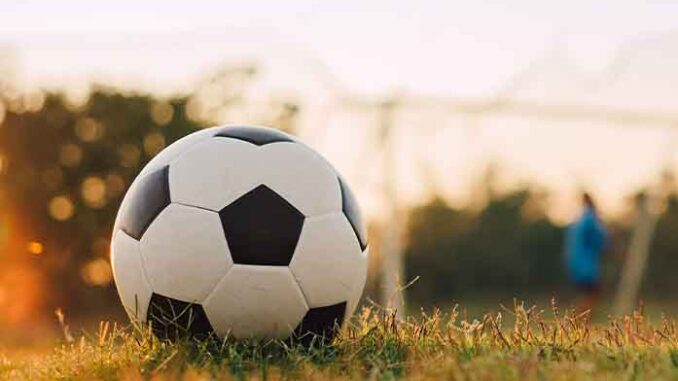
For parents of children on the autism spectrum, finding inclusive sports leagues can feel nearly impossible.
Even when parents do find a league that is a fit for their children, there is no guarantee it will last.
“It is an issue for us,” said Carina Nicholas, whose son Gabriel is on the autism spectrum. “We found one program where it was ongoing and then, next thing I know, they are canceling half of the sessions, and then they didn’t start back up.”
When leagues are unable to continue, everyone associated with them feels the impact, particularly those the programs exist to serve – the athletes participating in them.
“My daughter was in a special needs dance class and the class basically disbanded,” said Jeff Peters, who has a young son and a young daughter who are both on the autism spectrum. “The class had one-on-one buddies that helped them through everything, and my daughter was literally mourning the loss of her buddy.
“It was like her buddy had died or something because, in her world, if dance class went away, (her buddy) was something that had been ripped from her life.”
When TOPSoccer, a soccer league in Arizona for those with physical or intellectual disabilities in which Peters’ and Nicholas’ kids participate, was at risk of following a similar path, Peters knew this could not happen.
“One of the girls that was in the dance class was in TOPSoccer too, so she invited us to go over and join that,” Peters said. “They were in that for one season, and then, Jason Hall, who is now the TOPSoccer Chair, was stepping back a little to do administrative work. I thought to myself, ‘Oh my gosh, this program cannot go away like my daughter’s dance class.’
“They have 25 special needs kids that are in this program, and they are loving it. I knew we couldn’t let this go away.”
Finding the right arena for young athletes with disabilities is important, according to a March 2025 study by the Aspen Institute’s Project Play. Although 4% of the U.S. population under 18 has a disability, less than 1% participate in adaptive sports programs or Unified programs at schools, even though 15% of public school students receive special education services.
Concerned about the future of the class his daughter enjoyed, Peters stepped in to fill the role Hall vacated, becoming the coordinator of the Gilbert TOPSoccer program, to ensure its continued operation.
This season has been the program’s highest turnout since Peters has been present. In a typical season, between 20 and 25 athletes participate. For the current season, that number jumped to 42.
This spike was not by accident.
“Myself and a couple of other people worked pretty hard before this session to get an abundance of buddies,” said Peters, referring to a system that pairs a person who has intellectual or developmental disabilities with a peer to provide support and foster inclusion.
Once it was clear that there were more than enough volunteer “buddies” for the session, recruiting efforts for the athletes ramped up.
“I sent stuff to the Arizona Autism Society and to Raising Special Kids,” Peters said. “I was advertising at some of the therapy agencies, and they were putting up flyers. I was going with my son on Friday mornings and dropping him off at school, and talking to some of the other parents about TOPSoccer, and some of them brought their kids into the program.”
These efforts, coupled with assistance from local soccer clubs such as Arizona Arsenal Soccer Club, which also advertise the program and provide volunteers, have been successful.
Parents are also taking notice of the recruiting efforts of TOPSoccer.
“(Peters’) neighbor is working with Gabriel, so he even recruited his neighbor,” Nicholas said. “He saw that Gabriel needed someone who was more one-on-one and hands-on because half of the time, Gabriel won’t keep his eyes open, so he got (his neighbor) to help.”
A recent session in Gilbert showcased these increased numbers. The field seemed in perpetual motion, where any direction you looked would yield an athlete participating in whatever manner they desired with their buddy by their side.
It was quite the scene, but the abundance of activity and participants should not be mistaken for disorder.
“When you come and watch, it kind of looks like chaos, but there is really something structured that is going on there,” Peters said. “I recently looked around and thought, ‘Wow, this looks like a real team, with people doing separate drills and stuff.’ If it looks chaotic, it is a controlled chaos.”
The “controlled chaos” aspect is by design. Sessions are planned to be less rigid, allowing each athlete to participate in their preferred manner and encouraging them to play as they wish.
“Some of the athletes won’t even touch a soccer ball during the practice,” Peters said. “We’ve got several young ones this season that just want to run around, and they are happy with that. We are just happy that they stay on the field because, eventually, we will get them interested in one of the games.”
Perhaps more important than serving to allow participants to play soccer, TOPSoccer sessions are an environment for the athletes to interact with new people in different settings.
“For a lot of the kids, the only social interaction they get is with their parents,” Peters said. “If they can get more social interactions with their peers and with their buddies, it gives them an opportunity to interact and make friends outside of their family.”
Athletes can develop new skills that will serve them in whatever direction they go in the future, both on and off the field.
“Our goal is to give them some social skills, some more self-esteem and some sports skills,” Peters said. “Maybe they do TOPSoccer for a couple of seasons and find that they can go into a mainstream team and be successful.
“Ultimately, it may not be a sports team, but maybe they work at Chick-fil-A when they are 16, and you have to fit into a team there. We want to give them some fun, but also some life skills they will carry on throughout their life.”
As Peters and the rest of the TOPSoccer program hope, parents believe TOPSoccer serves their kids beyond just the weekend sessions. Additionally, they receive instruction and guidance in different ways than usual, which has its benefits.
“I think, for these kids, these small get-togethers and playing sports helps them in their everyday lives,” Nicholas said. “For Gabriel, I feel like soccer is teaching him, ‘You can do this and you can even do this while at school.’ Learning at TOPSoccer is more fun than someone constantly saying, ‘Gabriel, open your eyes.’
“Here, he is doing it in a fun way.”
The athletes are not the only ones who benefit from the sessions, either.
“We have these two new boys, who I think are in the sixth grade, that just joined as buddies,” said Christina Chacon, the coordinator of the TOPSoccer program in Tucson. “Their mom is like, ‘Oh my god, they are always coming home and saying stuff like ‘I never knew that these kids struggle this way and that they have difficulty getting ready in the morning and buttoning up their pants or tying their shoes. Now I understand why some may talk the way they do, or maybe not talk at all. It is not a choice.’
“They have more ways they can start communicating with the kids at TOPSoccer now. It is helping to get these kids to understand, ‘Oh, there are other ways I can communicate with them to understand their needs, their wants or just to hang out with them.’”
Much like the athletes they interact with, the volunteer buddies are not limited to only using this newfound knowledge at TOPSoccer sessions. It is just as valuable in their everyday lives.
“I think they are more appreciative of what they can do, and more patient with these kids and understand that they don’t have to distance themselves,” Chacon said. “Now, they know this stuff and think, ‘I can be their friend because I have learned all these different techniques, and how everyone is different.’
“I think, overall, it just changes their way of viewing anybody that is different, and learning how to accept them when they are unsure. I think they are really learning life lessons.”
As word continues to spread about the program, and as families and volunteers experience the benefits firsthand, these elevated numbers of athlete participants may become the norm.
“They told me it is for all ages,” Nicholas said. “Even as Gabriel grows to be an adult beyond 18, they said he will still be able to come. I think that is awesome.”
After attending a session and even stepping in as a volunteer buddy, it seems clear that many Arizona families are not alone in seeing TOPSoccer as part of their future.
“As long as there is a program,” Nicholas said, “we are going to keep showing up.”
